Some waters don’t just ripple—they seethe.
And if you’re anywhere near the American South, there’s a good chance those ripples are hiding teeth. Lots of them.
Alligators aren’t shy about claiming their turf. Swamps, lakes, rivers—even golf course ponds—these armored beasts glide just beneath the surface, waiting. Calm waters can turn deadly with one wrong splash.
Think you’re safe because it’s a popular fishing spot? Think again.
Gators don’t check signs, and they don’t care about your weekend plans.
We’re diving into the murkiest, most gator-crowded waters in the country.
From bayous where gators outnumber boats to tourist hotspots with jaws just offshore—these places are not where you want to take a casual swim.
Grab your curiosity (and maybe your bug spray), and let’s wade through the wildest waters in America that scream: Don’t even think about it.
Everglades National Park, Florida
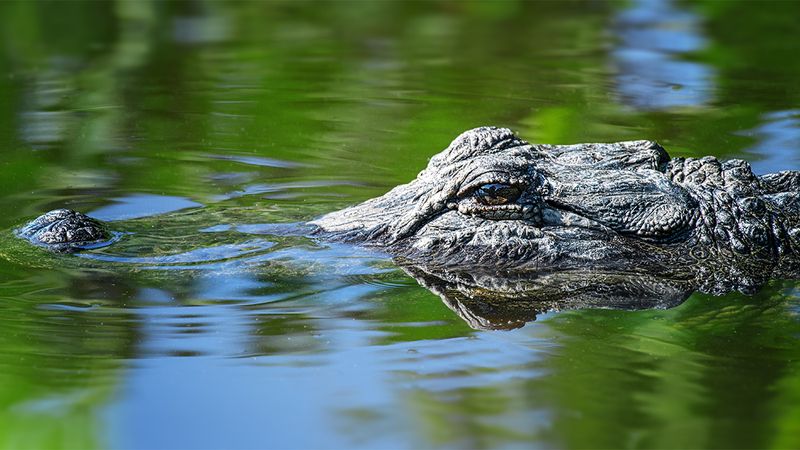
In the heart of Florida lies the sprawling Everglades National Park, a haven for wildlife and a hotspot for crocodiles. This unique ecosystem supports one of the most diverse animal populations in the world, including a significant number of American crocodiles. Visitors often spot these ancient reptiles basking on the banks or gliding through the water. Despite their presence, the park’s beauty attracts millions yearly. However, caution is paramount when venturing near the water’s edge, as crocodiles are both unpredictable and dangerous. The park’s history is deeply intertwined with these remarkable creatures’ survival.
Lake Okeechobee, Florida
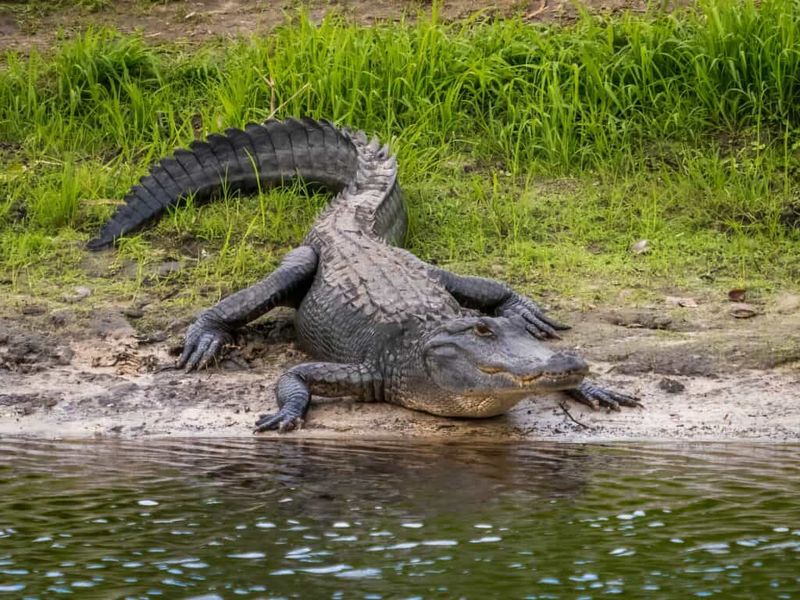
Lake Okeechobee, often referred to as Florida’s ‘liquid heart,’ is not only a fishing paradise but also a crocodile-rich zone. Its vast waters provide an ideal habitat for these reptiles, whose presence is a testament to the lake’s healthy ecosystem. Anglers and boaters must remain vigilant, as crocodiles can be lurking just beneath the surface. The lake’s extensive marshlands and warm climate create a perfect breeding ground, ensuring the crocodile population thrives. Visitors are advised to respect these powerful creatures and appreciate the delicate balance of nature they represent.
Crooked River, Georgia

Georgia’s Crooked River, winding through the scenic landscape, is home to numerous crocodiles. These reptiles have adapted to the river’s unique environment, often seen sunning themselves on the banks or stealthily moving through the water. The river’s meandering paths and surrounding wilderness create a natural labyrinth, where crocodiles blend seamlessly into their surroundings. Boaters and fishermen should exercise caution, as the river’s beauty belies the potential dangers lurking beneath. The Crooked River stands as a testament to the crocodile’s adaptability and the wild spirit of Georgia’s natural landscapes.
St. Johns River, Florida
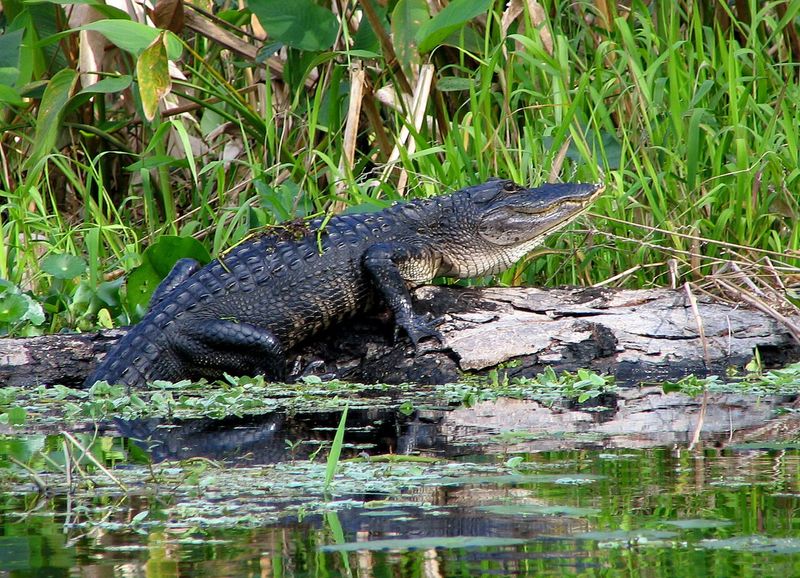
The St. Johns River, flowing through the heart of Florida, is another key habitat for American crocodiles. This river’s slow-moving waters and abundant wildlife offer an ideal setting for crocodiles to thrive. Visitors who venture along its banks often encounter these formidable creatures in their natural environment. The river’s length and accessibility make it a popular destination for outdoor enthusiasts, but it also requires respect and caution. Crocodiles here are both a captivating sight and a reminder of nature’s untamed power. For many, the St. Johns River is an emblem of Florida’s wild side.
Florida Bay, Florida
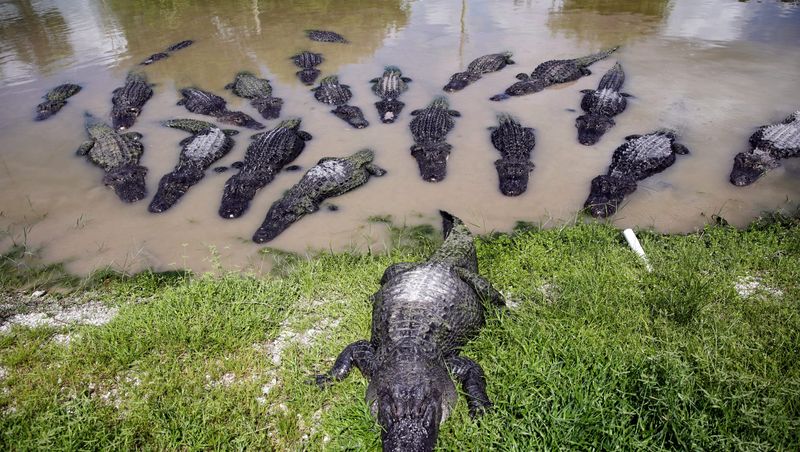
Florida Bay, where the freshwater of the Everglades meets the saltwater of the Gulf, is a crucial habitat for crocodiles. This diverse aquatic environment supports a variety of species, with crocodiles frequently sighted throughout the bay. The area’s unique ecosystem allows these reptiles to flourish, benefiting from the blend of marine and freshwater life. Visitors to Florida Bay can expect to see crocodiles basking in mangroves or swimming near the surface, a sight that underscores the bay’s role in preserving biodiversity. Here, crocodiles are both a natural wonder and a reminder of the bay’s ecological significance.
Loxahatchee River, Florida
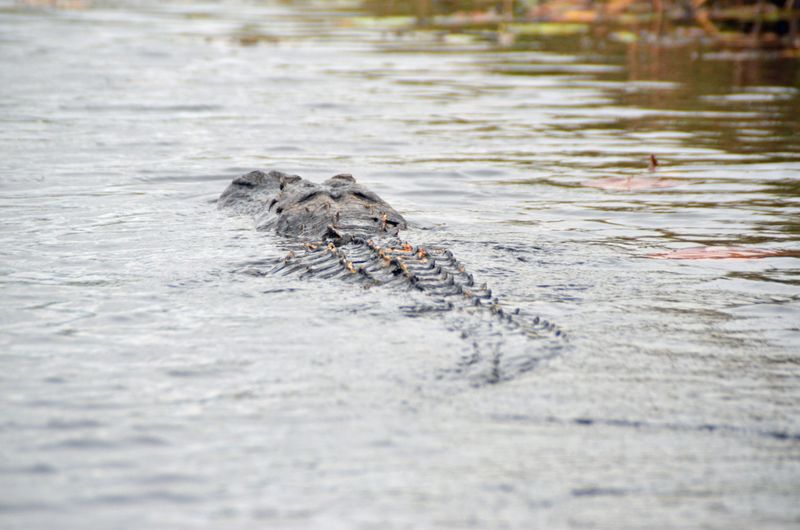
Tucked away in Florida’s wilderness, the Loxahatchee River is a hidden gem and a refuge for crocodiles. This river, with its serene flow and lush surroundings, provides a perfect habitat for these formidable reptiles. The Loxahatchee’s tranquil waters are deceptive, often concealing crocodiles that silently patrol their territory. This river is a testament to the coexistence of nature and wildlife, offering a glimpse into the life of crocodiles in their natural habitat. Wildlife enthusiasts and adventurers alike are drawn to the Loxahatchee’s unspoiled beauty, tempered by the respect these creatures command.
Lake Jesup, Florida
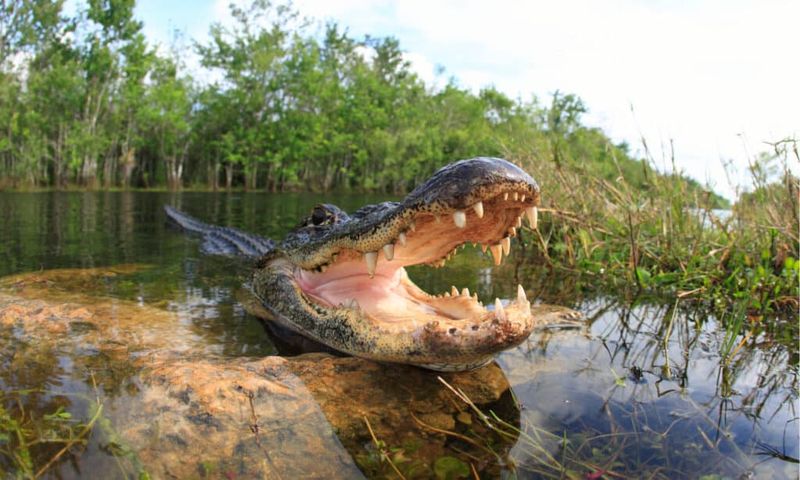
Lake Jesup, known for its large alligator population, also harbors a significant number of crocodiles. Located in central Florida, the lake’s warm, shallow waters are ideal for crocodiles to thrive. These reptiles are often seen sunning themselves along the banks or gliding through the lake’s expansive waters. The presence of crocodiles adds an element of excitement and caution to any visit. While Lake Jesup’s beauty is undeniable, it serves as a reminder of the wild and untamed nature of Florida’s lakes. For many, it’s both a destination and a lesson in respecting wildlife.
Blackwater River, Florida

Nestled in Florida’s panhandle, Blackwater River is famed for its dark, tannin-rich waters and its crocodile inhabitants. The river’s slow currents and secluded environment make it a favored spot for these stealthy reptiles. Canoeists and kayakers often traverse these waters, drawn by the river’s beauty and the challenge of spotting crocodiles in their natural habitat. The Blackwater River’s unique ecosystem supports a diverse range of wildlife, with crocodiles as the star attraction. It’s a place where adventure meets conservation, and where visitors learn to appreciate the balance of nature firsthand.
Estero Bay, Florida
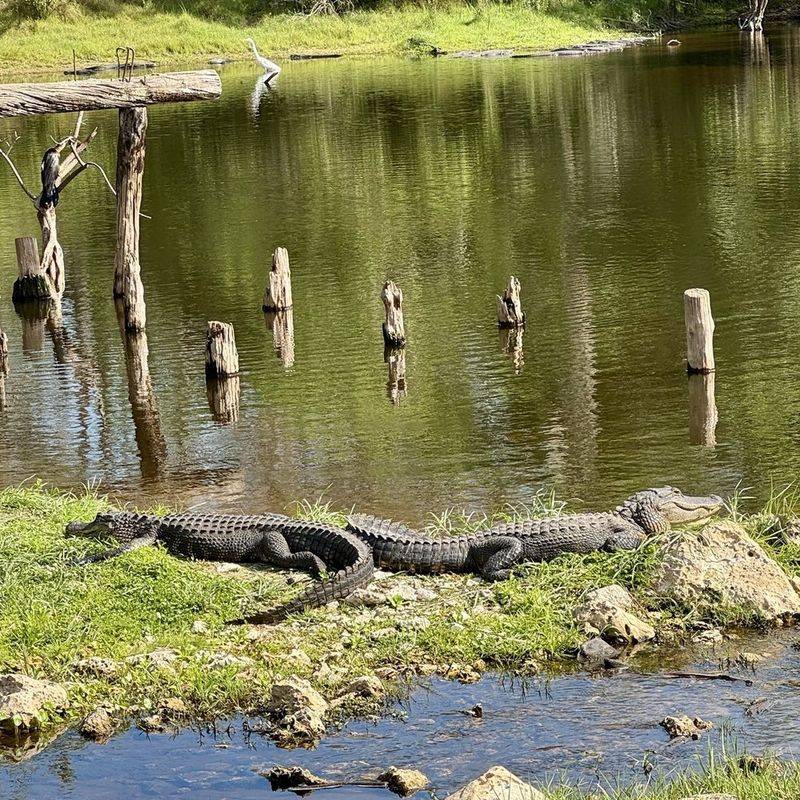
Estero Bay, a protected aquatic preserve, is home to a thriving population of crocodiles. This unique environment, with its mix of saltwater and freshwater, provides an ideal habitat for these ancient reptiles. Visitors to the bay can often see crocodiles basking in the sun or swimming near the mangroves. The bay’s preservation efforts ensure a safe haven for wildlife, making it a prime location for observing crocodiles in their element. Estero Bay is not only a natural sanctuary but also a reminder of the importance of protecting our diverse ecosystems.
Lake Tarpon, Florida
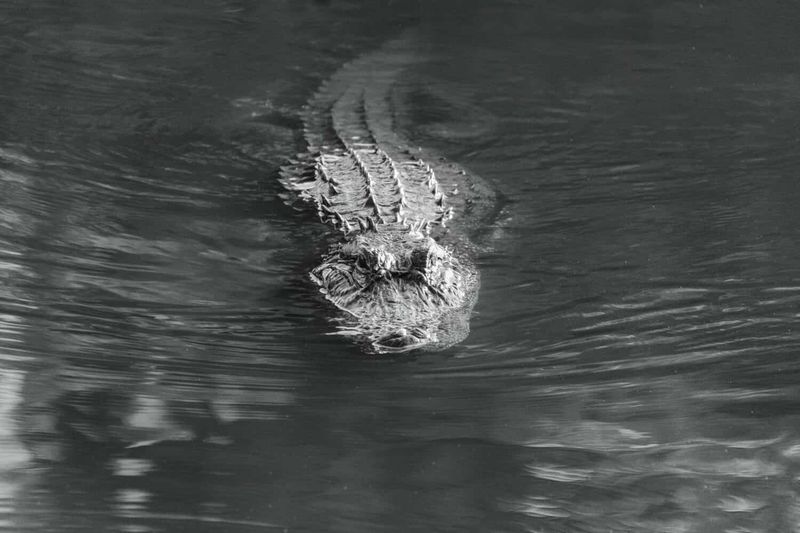
Lake Tarpon, situated in Florida’s Pinellas County, is a popular recreational site and a crocodile haven. This lake’s warm, shallow waters provide an ideal habitat for crocodiles, attracting both wildlife enthusiasts and cautionary tales. Visitors often enjoy fishing or boating, occasionally catching a glimpse of these reptiles lurking near the shoreline. The lake’s thriving crocodile population is a testament to its ecological health and the adaptability of these reptiles. Lake Tarpon serves as a reminder of nature’s wonders and the need to respect the wildlife that calls it home.
Ten Thousand Islands, Florida
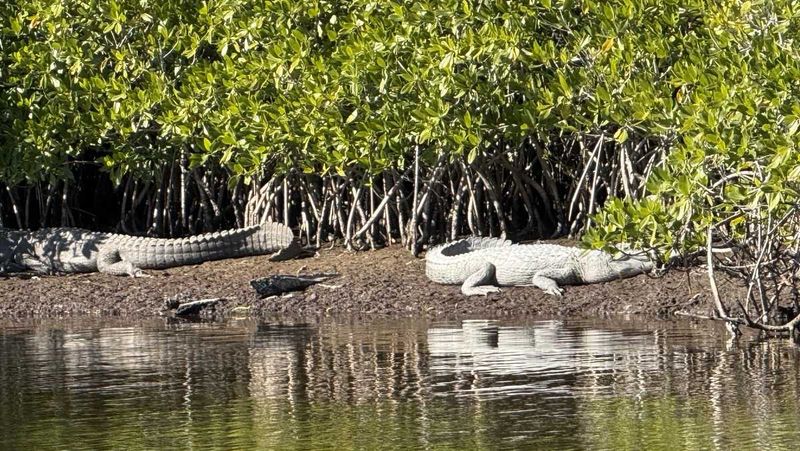
The Ten Thousand Islands, a labyrinth of mangroves and waterways, is a paradise for crocodiles. This remote area, part of Florida’s Gulf Coast, offers a secluded habitat where these reptiles can thrive undisturbed. Visitors who explore the islands by boat or kayak often find themselves in close proximity to crocodiles, witnessing their natural behavior firsthand. The islands’ intricate waterways provide both a challenge and an adventure, with crocodiles as the ever-present guardians of this untamed wilderness. The Ten Thousand Islands exemplify the raw beauty of Florida’s natural landscapes.
Anclote River, Florida

The Anclote River, flowing through Florida’s Gulf Coast, is a sanctuary for crocodiles. This river’s gentle currents and abundant vegetation create a perfect environment for these stealthy reptiles. Visitors often navigate the river by boat, enjoying the natural beauty and the thrill of spotting crocodiles in their element. The Anclote River’s crocodile population highlights the river’s ecological richness and the balance between land and water. Here, wildlife thrives, and crocodiles remain a compelling symbol of Florida’s wild heart. The river continues to draw adventurers and nature lovers alike.
Caloosahatchee River, Florida

The Caloosahatchee River, stretching through southern Florida, is a crucial habitat for American crocodiles. This river’s expansive waters and abundant fish make it an ideal location for crocodiles to flourish. Boaters and fishermen frequently share these waters with crocodiles, observing their natural behavior up close. The Caloosahatchee’s role in Florida’s water system is vital, supporting both wildlife and human activities. Crocodiles here are not just a curiosity but a reminder of the river’s vibrant ecosystem and the importance of preserving natural habitats for future generations.
Peace River, Florida
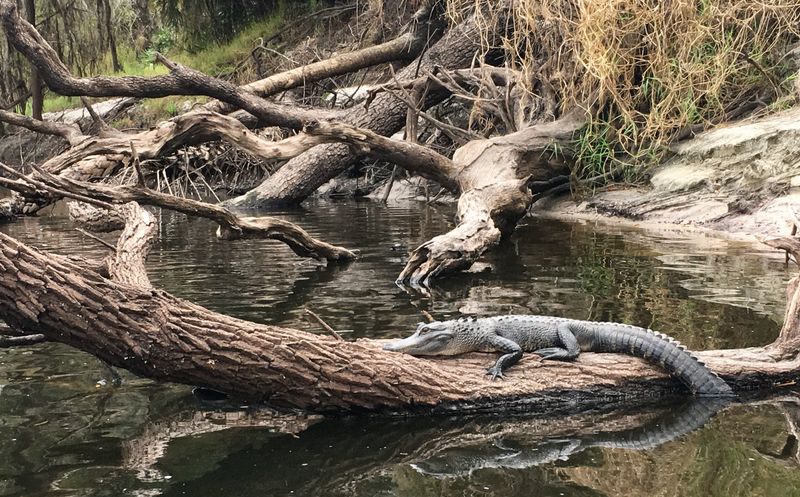
Florida’s Peace River, with its tranquil flow and rich biodiversity, is a lesser-known haven for crocodiles. This river meanders through central Florida, providing a serene backdrop for both wildlife and outdoor enthusiasts. Crocodiles find refuge in the river’s calm waters, where they can be seen basking in the sun or gliding silently beneath the surface. The Peace River’s crocodile population is a testament to the river’s health and the resilience of wildlife. Here, visitors can enjoy a peaceful connection with nature, tempered by the awareness of the crocodiles’ formidable presence.

